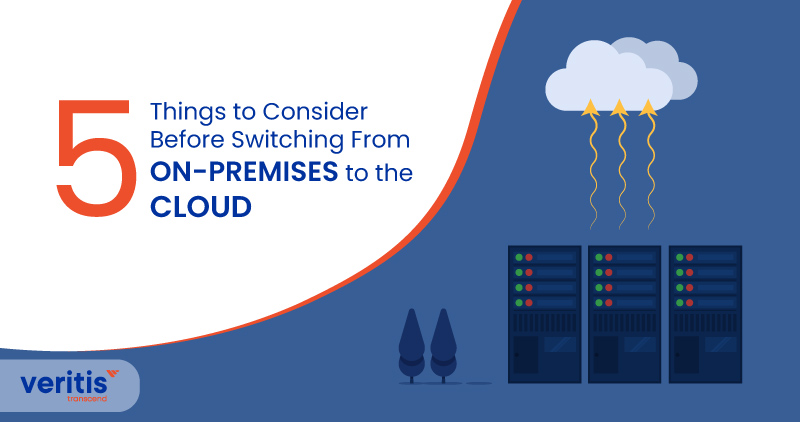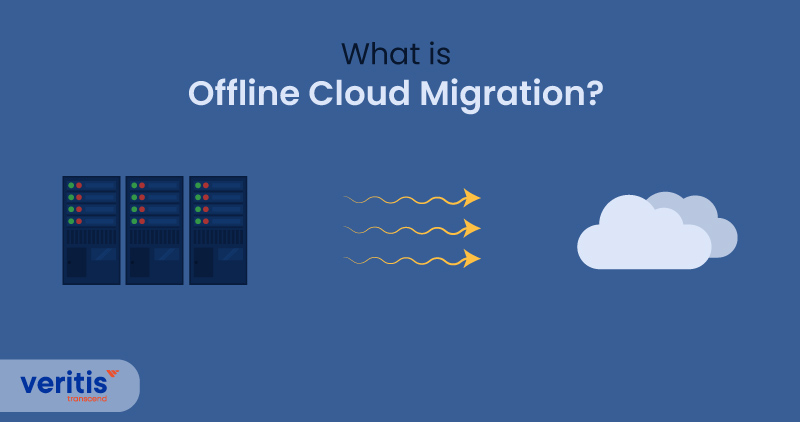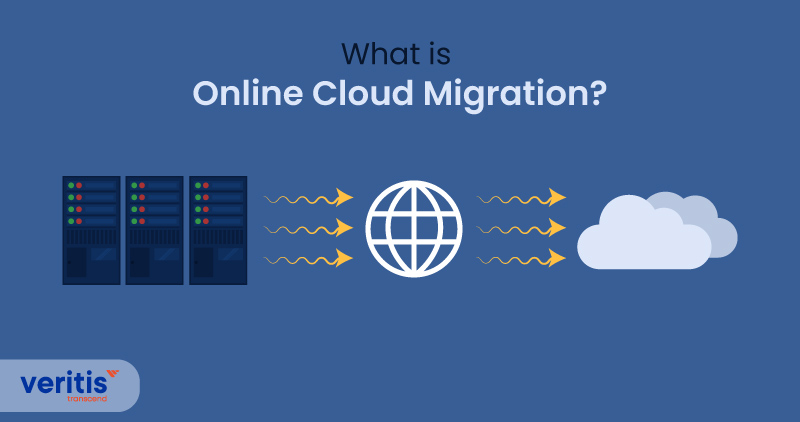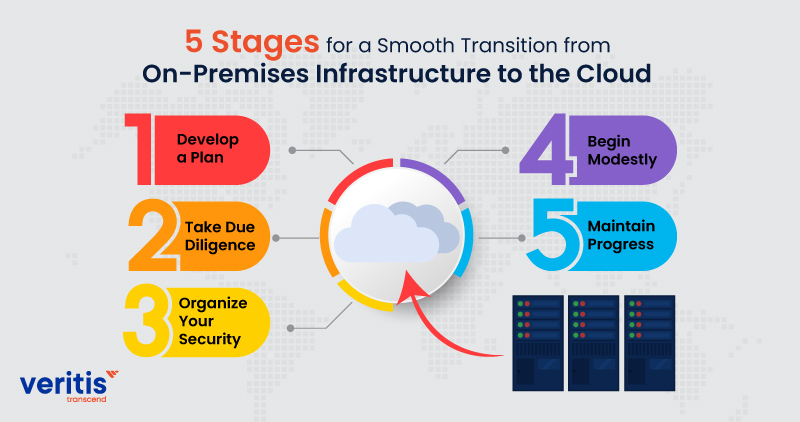
Companies are moving from on-premise environments to cloud computing, and businesses of all sizes and industries are doing so. This migration to the shared usage of resources allows organizations to access essentially infinite computation and storage capacity at a fraction of the expense associated with on premise to cloud migration.
It is known that the cloud has many benefits. Many businesses from all sectors have entered the world of cloud computing. However, there are different levels of cloud migration challenges. Furthermore, not all businesses that employ migration strategies do so by immediately moving their data to the cloud. Instead, moving to the cloud is often done iteratively by many organizations due to both business and technical requirements.
Before starting the process, it is essential to create a core plan if you are thinking of moving your organization’s data and applications to a cloud-based infrastructure. With all the variables and moving elements, cloud data migration is challenging.
Businesses estimate that deploying a cloud infrastructure was more challenging than anticipated in 62% of cases. A successful migration requires careful preparation to address these concerns, rigorous research to identify potential issues, and an all-encompassing strategy.
There are two ways to move applications and data as part of a cloud migration strategy when moving from on-premises to the cloud: offline or online migration. Each strategy has unique benefits and drawbacks, from security cost savings, and performance.
What is Offline Cloud Migration?

Offline cloud migration moves data and applications from the organization’s on premises automation infrastructure to the cloud without relying on the internet. This strategy is frequently applied when a company has enormous data that would take too long to send over the internet.
To accomplish an offline cloud data migration, the company often sends the cloud provider physical storage devices containing the data, such as hard drives or tapes. The provider subsequently uploads the data to the organization’s cloud environment. This procedure could be quicker than sending the data over the internet. It also obviates potential security issues from sending sensitive data over a public network.
The firm can start moving its apps and services to the cloud once the data has been uploaded to the cloud environment. Typically, this entails testing and modifying the apps to ensure they operate properly in the cloud environment. In addition, the company can shut down its on-site infrastructure after the migration is finished and run only in the cloud.
Useful link: How Can Organizations Make Best Use of Lift and Shift Cloud Migration?
What is Online Cloud Migration?

Online cloud migration transfers digital assets and applications from a local data center to a cloud-based infrastructure via the internet without hindering the business’s regular operations.
Online cloud migration solutions refer to transferring data and applications from a local, on premises automation architecture to a cloud-based infrastructure with little service interruption or downtime. Tools for virtualization, containerization, and on premise cloud orchestration are just a few of the techniques that can use to accomplish this.
Online cloud migration strategy aims to give businesses the flexibility, scalability, and cost-effectiveness of the cloud while preserving the usability and dependability of their current applications and services. It is a strategy that businesses are increasingly using to update their on premise infrastructure, cut expenses, and improve their agility.
Online cloud migration strategies have the significant drawback of being slow, especially when enterprises must send vast volumes of data. This is because of network capacity restrictions. Furthermore, sending data across the internet exposes it to security vulnerabilities associated with the network.
Migration From On-Premises to the Cloud: The Basics
Data, applications, and other IT services are moved onto the cloud through a process known as cloud migration. We’ll focus primarily on premise to cloud migration or moving your on-premises infrastructure and data to a cloud deployment that offers PaaS (or) IaaS.
Cloud vs on-premise security refers to managing their server, whilst cloud-based security is all about a network of remote servers connected to the internet that powers cloud-based security systems.
The program’s location is the crucial difference between on premise and cloud versions. On-premise solutions software is locally installed on the computers and servers that belong to your business, as opposed to cloud software, which is hosted on the vendor’s server and accessed using a web browser.
On-premises data is usually moved during migration to either a single public cloud, a multi-cloud service, or a hybrid cloud and on premise solution that uses both public cloud resources and private on-premises data infrastructure. Some benefits of cloud migration are reliability, scalability, lower costs, security, disaster recovery and automatic backup, increased mobility, and more.
Useful link: Cloud Vs On-Premise: IT Infrastructure Model of Your Choice?
5 Stages for a Smooth Transition From On Premise to Cloud Migration

Every migration endeavor is unique. However, in general, any company’s attempts to transition from on premise to cloud migration will be well-served by the following five steps:
1) Develop a Plan
Addressing two issues is the first step in a successful cloud migration strategy. First, what drives your desire to migrate your applications and data to the cloud? What are you going to migrate? This will determine the operation’s complexity: For instance, using the on premise cloud to recover a small number of apps from a disaster will be simpler and require fewer steps than a complete transfer of corporate workloads. Similarly, moving to PaaS rather than IaaS may be a superior option if DevOps is your primary driving force. A thorough inventory of existing applications and reports is also essential to find new or duplicate reports and data that have yet to be viewed and prevent the additional work of migrating those items.
2) Take Due Diligence
To estimate your total cost of ownership (TCO) in each situation, look at the offerings of several providers. It would help if you also considered various relocation techniques’ logistical and financial needs. Remember: There’s no harm in starting small with on-premise to cloud migration, such as a lift-and-shift operation for specific app workloads, and adopting a different approach, like re-platforming or restructuring later, when you have a better understanding of what you need from migrate to the cloud.
3) Organize Your Security
To reduce the exposure of on-premises information while in transit, deploy a cloud firewall-as-a-service (FWaaS) before your migration.
4) Begin Modestly
Test the cloud’s capabilities before migrating by shifting a workload that isn’t crucial to business operations in real-time. Then, continue the migration using the chosen technique once you know the app and data are in order on the cloud. The process might cause delays in business operations, particularly for refactoring migrations that must be carefully prepared for and tested beforehand. The majority of cloud service providers provide options to lessen interruption.
5) Maintain Progress
After the migration is finished, carefully sync and update apps as necessary. Systems on-premises may be disabled if you’re performing a cloud-only migration. But, there are many circumstances, like a hybrid cloud deployment, when keeping these systems will be beneficial.
Conclusion
Successful cloud migration solutions require planning, implementation, and completion, which is time-consuming. To succeed, your firm requires greater security, flexibility, modernization, and cost savings, which you may obtain if you invest the necessary time and resources in your cloud migration strategy.
Using cloud-based migration and development services from Veritis, the Stevie Award winner will enhance your cloud migration strategies. In addition, we can assist you with the exploration and design processes required to evaluate your environment and maximize specialized cloud solutions.
After that, Veritis support your platform selection, application deployment, and complete migration to your new environment. Finally, our experts will ensure that your cloud environment keeps up with the security and performance standards that your company requires to succeed.
Got Questions? Schedule A Call
Also Read:
- 5 Common ‘Post Cloud Migration Risks’ That Need Attention!
- Leverage Full Advantage of Cloud Migration with GCP
- Accelerate Business Growth with AWS Cloud Migration
- A Know-How of Cloud Migration: Azure and Its 4-Step Strategy
- AWS vs Azure vs GCP: Breakdown of Cloud Migration Services
- Cloud Migration and IT Infra Support to Multimedia Industry